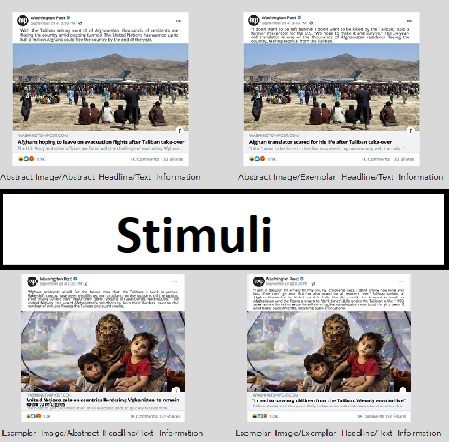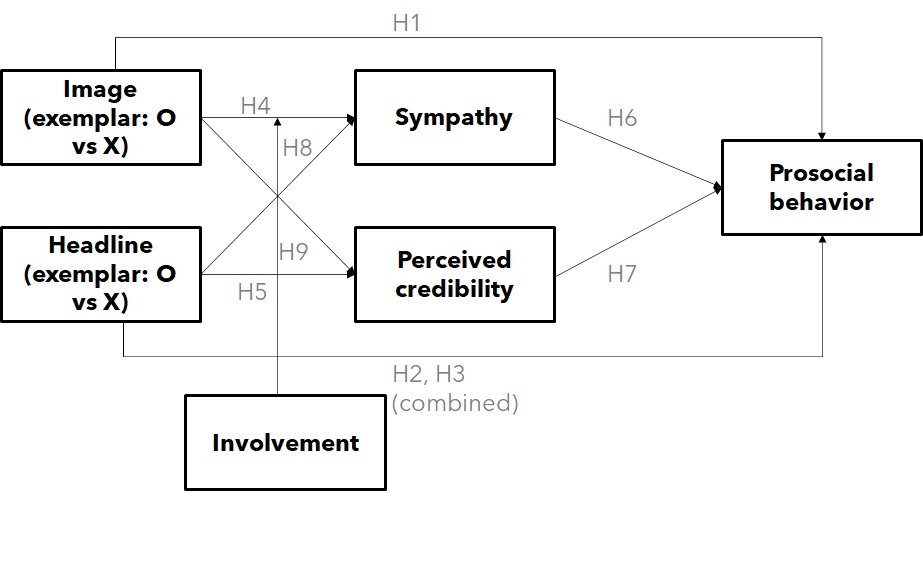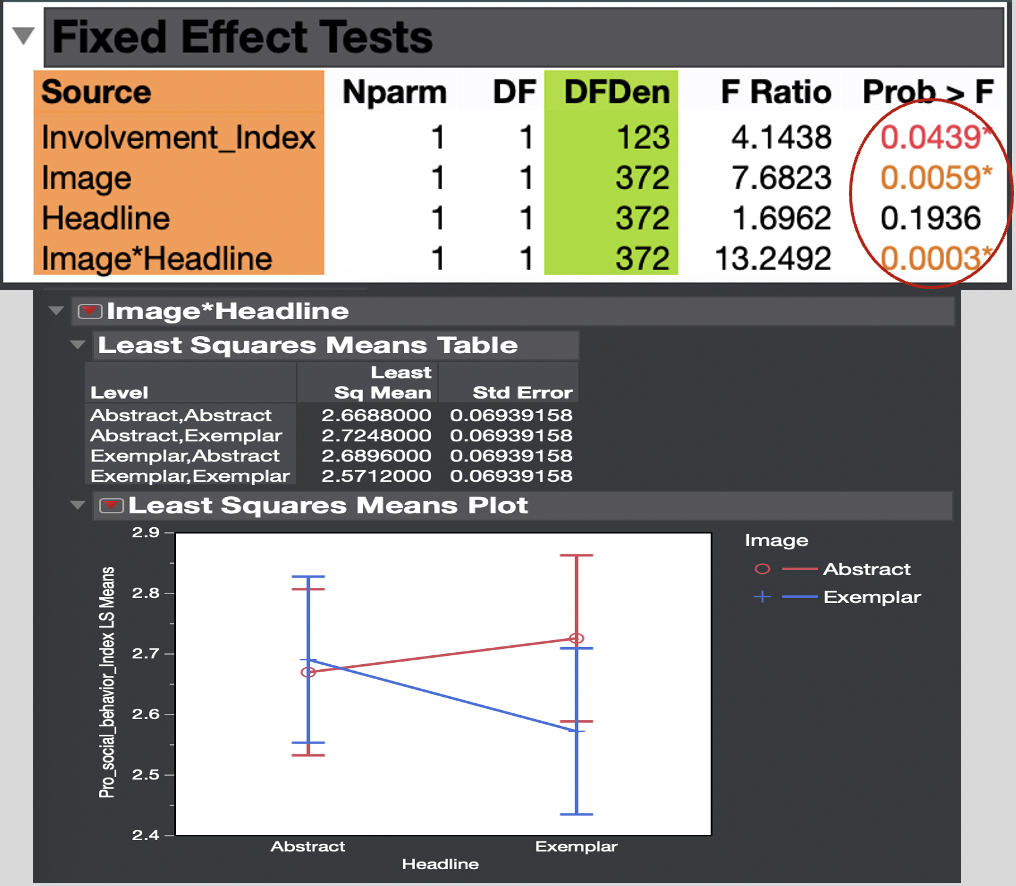Media Effects Research Lab - Research Archive
Have we got News for you: Exemplification in Social Media News Posts
Student Researcher(s)
Timilehin Durotoye (Ph.D Candidate);
Yongnam Jung (Ph.D Candidate);
Lana Medina (Ph.D Candidate);
Faculty Supervisor
INTRODUCTION
Given the increase of news accessed via social media and the indication that social media users may be sharing information based solely on the post information and image, there is need to examine how audiences react to exemplars utilized in that medium. Past research has indicated how this hybrid media system has contributed to amplifying attention to political campaigns/issues (Zhang et al., 2018), health information (Ben Messaoud, 2021), fake news or misinformation (Carlson, 2020), and how that information in turn shapes public opinion (Gabore & Xiujun, 2018). To investigate this topic, this study conducted a 2 (news information/headline and news image) X 2 (exemplar vs abstract) within-subjects design experiment to further understand how exemplification in social media news increases pro-social behavior. The benefit of this type of research is greater understanding to how audiences respond to exemplification in news, but also health information, public policy, and political messages.
RESEARCH QUESTION / HYPOTHESES

RQ. For adults, controlling for content and news outlets, what is the relationship between the exemplification of 1) news headlines and 2) images on Facebook, and 1) credibility 2) sympathy and 3) prosocial behavior?
IV to DV
H1. Individuals exposed to exemplar news images on Facebook will be more likely to be persuaded to exhibit prosocial behaviors than those exposed to abstract news images.
H2. Individuals exposed to an exemplar news headlines/post information on Facebook will be more likely to be persuaded to exhibit prosocial behaviors than those exposed to abstract news headlines/post information.
H3. Individuals exposed to exemplar news images combined with exemplar news headlines/post information on Facebook will be persuaded to exhibit the greatest prosocial behaviors.
IV to Mediator
H4. Individuals exposed to an exemplar news image on Facebook will be more likely to experience sympathy compared to those exposed to an abstract news image.
H5. Individuals exposed to an exemplar news headline on Facebook will be more likely to believe the news post is credible compared to those exposed to an abstract news image
Mediator to DV
H6. Individuals who think that exposed news is credible will be more likely to be persuaded to exhibit prosocial behaviors than those who don't.
H7. Individuals who feel sympathy about the news will be more likely to be persuaded to exhibit prosocial behaviors than those who don’t.
H8. Exemplar image’s effect on sympathy is stronger in low involvement status than high involvement status.
H9. Exemplar image’s effect on perceived credibility is stronger in low involvement status than high involvement status.
METHOD

A within-subjects manipulated experiment using undergraduate student volunteers (N=127) was conducted to test the effect of exemplification of social media news posts on individual’s likelihood to commit prosocial behavior. Participants read four social media news posts with the following: 1) exemplar image with exemplar post information and headline; 2) exemplar image with abstract post information and headline; 3) abstract image with exemplar post information and headline; 4) abstract image with abstract post information and headline. They were then asked to rate them on six measures for prosocial behavior, two measures for issue involvement, and measures for sympathy and perceived credibility.
RESULTS

- The combination of exemplar image/headline doesn’t drive more prosocial behavior than abstract ones (H1,2,3). Hypotheses – disconfirmed

- The combination of abstract image/exemplar headline drives the most prosocial behavior.

- Exemplar image doesn’t drive more sympathy or perceived credibility than abstract ones (H4,5). Hypotheses disconfirmed

- Issue involvement doesn’t have moderating effect between image/headline and sympathy or perceived credibility. (H8,9).
- Controlling for all other variables, issue involvement had a significant effect on prosocial behavior.
- Males are more inclined to prosocial behaviors than females.
- Political affiliation has strong effect on issue involvement, and democrats had the least prosocial behavior.
CONCLUSIONS/DISCUSSION
Although the first few hypotheses were disconfirmed, the results were significant, which indicates how abstract images are better at garnering more sympathy, leading to increased prosocial behavior. Unlike an exemplar image, which provides audiences with an example representing a larger population, the abstract image actually illustrates the wider population that needs help; that visual stimulus (seeing proof of the need for donations or other contribution) could be more directly provoking sympathy and prosocial behavior. However, because the study was conducted as a within-subject design without randomization, it’s possible this is a confounding variable on the results. The theoretical implication of this study is greater understanding into how exemplification theory operates with prosocial behavior as the dependent variable. Previous exemplification studies have primarily focused on measuring attitude and issue perception; these results provide insight into how exemplification of images could have less of an impact on prosocial behavior compared to abstract images.
For more details regarding the study contact
Dr. S. Shyam Sundar by e-mail at sss12@psu.edu or by telephone at (814) 865-2173

